The benefits and harms of yellow bell peppers and is there a difference between the colors of the vegetable?
Fleshy, juicy and bright bell pepper is an indispensable ingredient for summer dishes. Easy on the stomach, low-calorie and tasty, the vegetable is widely used in dietary nutrition.
Multi-colored peppers are a popular product on any table. But for many consumers it remains unclear whether the color of a vegetable affects its properties. What benefits and harms will yellow peppers bring, as opposed to red and green ones? In the article you will find a detailed answer to this question.
Composition and properties
The vegetable has a rich composition vitamins and minerals, capable of providing the body with almost all the necessary nutrients.
Most fruits contain sweet peppers pyridoxine, ascorbic and folic acids.
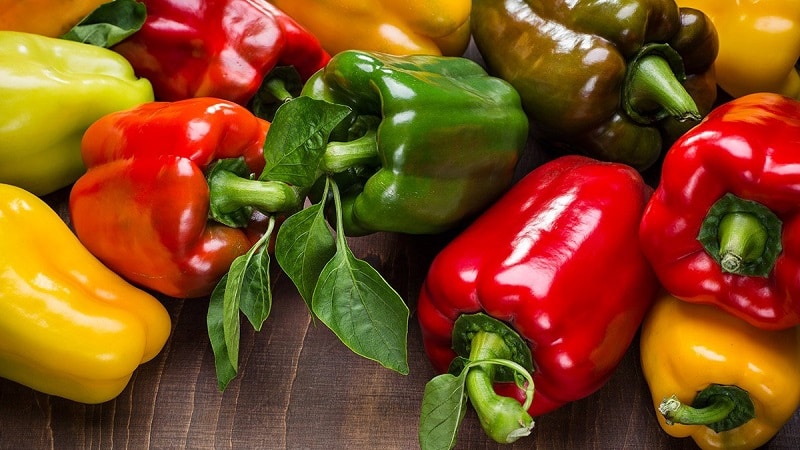
Pyridoxine activates metabolic processes, participates in the formation of red blood cells, processes of excitation and inhibition in the central nervous system, has a positive effect on the condition of the skin, and prevents the development of anemia.
Ascorbic acid (vitamin C) strengthens capillaries, prevents their fragility, normalizes the functioning of the nervous system, and helps the absorption of iron.
Folic acid participates in protein synthesis and in the processes of cell division and reproduction. A necessary item for pregnant women.
Other vitamins contained in bell peppers:
- vitamin A (sharpens vision);
- beta-carotene (strengthens the immune system);
- PP (regulates cholesterol in the blood);
- E (antioxidant);
- K (for restoration and formation of bone tissue).
Minerals:
- potassium – content in yellow pepper – 202 mg, prevents the accumulation of sodium salts;
- calcium – supports the functioning of the nervous system, strengthens bone tissue;
- phosphorus – participates in the processes of cell division;
- magnesium – regulates the distribution of calcium throughout tissues;
- sodium – supports neuromuscular regulation;
- iron – participates in the formation of hemoglobin in the blood;
- copper – promotes the formation of red blood cells, the body’s resistance to infections;
- manganese – participates in glucose metabolism, maintaining optimal blood sugar levels;
- selenium – needed for proper functioning of the heart;
- zinc – is part of red blood cells and leukocytes, promotes wound healing.

Content of vitamins and minerals in sweet bell peppers may vary slightly depending on the color of the fruit.
Reference. Yellow peppers lead among others in potassium content. It is the one that is most useful for older people.
KBZHU
The question of how many calories are in bell peppers worries those who follow a diet.
The content of proteins, fats and carbohydrates is shown in the table per 100 g of product:
| Substances and calories | In grams | % of daily value |
| squirrels | 1,45 | 2 |
| fats | 0,16 | 0 |
| carbohydrates | 5,59 | 2 |
|
Calories (red) 26.8 kcal (yellow) 27.2 kcal (green) 23.2 kcal |
1 | |
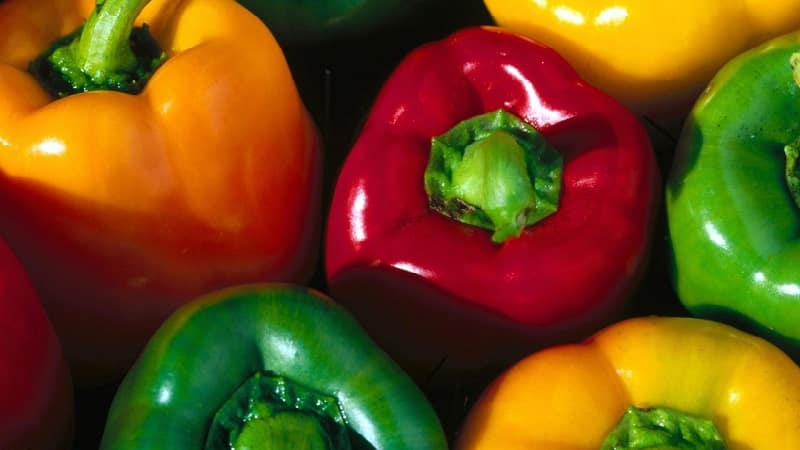
Benefits and harms
Bell pepper has a unique composition. How this vegetable is useful:
- increasing immunity;
- prevention of cancer;
- improvement of blood composition;
- normalization of appetite and improvement of the digestive system;
- support of the nervous system, prevention of depression;
- normalization of blood pressure;
- memory improvement;
- maintaining visual acuity.
Harm from consumption may occur due to diseases gastrointestinal tract, in particular gastritis.
Gastroenterologists agree that with this disease it is not necessary to completely exclude vegetables from the diet. But it must be used with caution. The presence of hard fiber in the product interferes with rapid digestion and leads to irritation of the mucous membrane. To soften the effect of sweet pepper, it is subjected to heat treatment.
The optimal dish for people suffering from stomach diseases - steamed peppers. It is not recommended to consume raw vegetables for gastritis and ulcerative lesions of the mucous membrane.
If the disease is accompanied by attacks of heartburn or increased acidity, pepper will have to be excluded from the diet due to the high content of vitamin C in the fruit.
Reference. It is recommended to limit the consumption of sweet peppers to people with hypertension, gout, kidney and liver diseases.
How the benefits and harms change depending on the color of the bell pepper
Do not think that the composition of multi-colored peppers is identical and they differ only in the predominance of one or another pigment. There is also a difference in the chemical composition of the fruits.
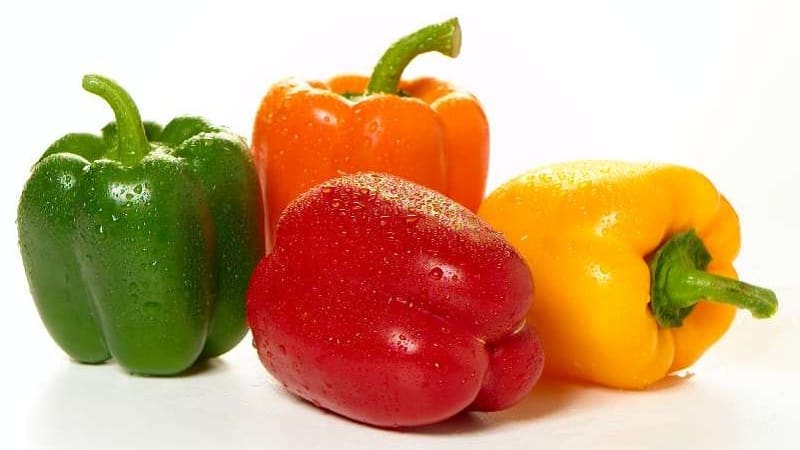
Yellow
Yellow fruits are rich in potassium, phosphorus and carotene. This vegetable brings maximum benefit during periods of mental stress. It is recommended for use by students before exams, as well as by people of intellectual work.
Yellow pepper improves memory and concentration, relieves depression and insomnia.
Yellow fruits are valuable for older people its positive effects on the cardiovascular system.
Yellow bell pepper included in the diet as an adjuvant in the treatment of anemia.
Red
Red fruits contain the highest amounts of vitamins A and C. A vegetable of this color is useful for the functioning of the immune system and maintaining visual acuity.
Red fruits contain lycopene, one of the most powerful antioxidants. This pepper is used to prolong the youth of the body. Lycopene slows down cell aging.
Of the potential risks – possible allergic reactions.
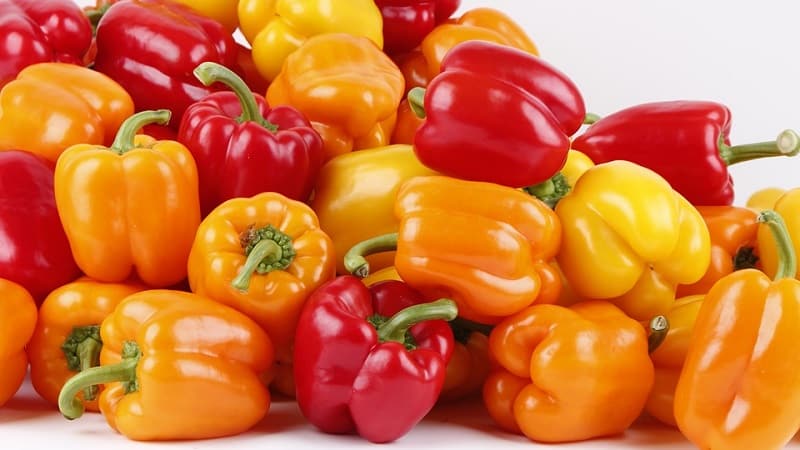
Orange
In terms of vitamin A content it lags slightly behind its red counterpart, but is ahead of carrots in this indicator. Thanks to its composition, it successfully removes free radicals from the body, supports regenerative processes, and increases the level of good cholesterol.
May cause allergies.
Green
Dietary variety of bell pepper. For green fruits characterized by an increased content of phytosterols necessary for normalizing fat metabolism. Regular consumption of green bell pepper speeds up metabolism, removes toxins, and strengthens the walls of blood vessels.
Iron contained in green fruits protects the body from bacteria and is involved in the synthesis of hemoglobin.
But the most valuable thing in green fruits is their use reduces the risk of developing malignant tumors.
Reference. Green pepper is especially useful for preventing breast cancer.
The effect of bell pepper on women's health
Since most women are subject to frequent mood swings, they You should include sweet peppers in your daily diet to avoid sudden emotional changes. Peppers of any color contribute to the production of serotonin, the hormone of happiness.
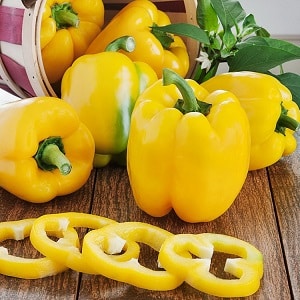 You can get your dose of joy by eating a few pieces of chocolate. But there is a risk of weight gain from chocolate, but not from pepper.So this is a great option for those who are struggling with excess weight.
You can get your dose of joy by eating a few pieces of chocolate. But there is a risk of weight gain from chocolate, but not from pepper.So this is a great option for those who are struggling with excess weight.
Huge Regular consumption of vegetables is beneficial for the condition of the skin, nails and hair. The microelements contained in the vegetable have a beneficial effect on appearance and promote rejuvenation at the cellular level. For this purpose, it is better to use yellow and red fruits.
The folic acid content makes the vegetable indispensable on the table of expectant mothers for the formation of a healthy fetus.
Additional benefits of sweet peppers for pregnant women:
- thinning the blood and preventing varicose veins;
- slowing down the synthesis of hemoglobin when its level is elevated;
- strengthening bone tissue.
Impact on the male body
The problem of many modern men is early baldness. Bell pepper is effective in combating it: the vegetable helps strengthen the hair structure.
 The benefits of pepper for men:
The benefits of pepper for men:
- beneficial effect on potency and sperm production;
- activation of brain activity and thought processes;
- increased performance;
- relief from chronic fatigue and recovery from depression;
- general strengthening of the body.
Sweet pepper for children
Vegetables can be introduced into children's diets from an early age.. But it is not recommended to give fresh pepper to children under one year of age - only as part of vegetable soups, boiled or baked.
You can introduce the vegetable in its raw form to a child aged 1.6-1.8 years.. It is better to offer your child a yellow, red or orange vegetable. He definitely won’t like green, because it has a specific bitter taste.
When choosing pepper for a children's menu, consider the nuances:
- introduce your baby to vegetables only when they are in season;
- choose peppers grown in open ground with minimal use of nitrates (ideally, without them at all);
- give preference to small, fleshy fruits;
- carefully check for cracks, dark spots, rot.

The benefits of sweet peppers for children:
- improves digestion;
- reduces the effects of increased eye strain (relevant for schoolchildren and gadget lovers);
- increases immunity;
- helps strengthen bones.
Interesting facts about other types of pepper:
Unique properties of allspice peas
Norms and rules of use
The optimal amount of product consumed per day is 150-200 g, these are 2-3 medium-sized fruits. If there is a risk of allergic reactions, it is recommended to reduce the daily intake to 70-80 g (1 fruit).
Peppers are best consumed fresh. - this way it preserves the entire vitamin composition. During heat treatment, the vegetable loses a significant part of its nutrients, but acquires excellent taste.
Recommendation. Compose your diet so that it contains dishes with fresh bell pepper and cooked vegetables in equal proportions.
Check the quality of the vegetable before purchasing and eating. Criteria:
- fetal elasticity;
- freshness of the tail - it should be green and not withered;
- smoothness and shine of the surface;
- dry skin and lack of plaque on it.
Contraindications
The use of bell pepper is contraindicated in:
- individual intolerance;
- allergies (red and orange fruits);
- chronic gastrointestinal diseases;
- kidney and liver diseases;
- hemorrhoids.
Reviews
 We invite you to read reviews about the use of yellow bell pepper.
We invite you to read reviews about the use of yellow bell pepper.
Elena Kosheleva, mother on maternity leave: “Before pregnancy, I didn’t really like bell peppers.I ate it in a Greek salad, but wasn't thrilled. I liked the color palette of the salad, which the colorful vegetables gave the dish. But in the third month of gestation, she sharply changed her opinion about him. She especially leaned on yellow fruits. I noticed how the absent-mindedness and tearfulness characteristic of pregnant women gradually went away. I began to get enough sleep and stopped being afraid of childbirth. In terms of strengthening the nervous system, the vegetable helped me a lot. I won’t say anything about the beauty of my nails and hair, but there were no big problems with it.”.
Victor, 35 years old: “I can speak from my own experience about the benefits of bell pepper for concentrating attention and increasing performance. During periods of high workload, when I need to close several orders in a short time, I prepare myself a pepper “bomb” - a salad with several types of bell peppers. Helps. I deliver everything on time. Fatigue is minimal. True, the appetite increases significantly.".
Nikolay, young pensioner: “It is not true that only women do not want to grow old. Everyone is afraid of old age. I am running away from it as best I can at 62 years old. In the morning I run in the park, in the evening I swing dumbbells. And at lunch I found a way to distance myself from her - every other day I eat a large yellow pepper. A therapist I know recommended. I must say, I feel cheerful. Got rid of heart problems. They were not critical. But still there were".
Conclusion
This colorful vegetable is beneficial only if it is not abused. Yellow pepper does not require caution when consumed when a person is completely healthy. But at the slightest deviation from the norm - the appearance of heartburn, nausea after eating a product, exclude it from the diet and consult a doctor.